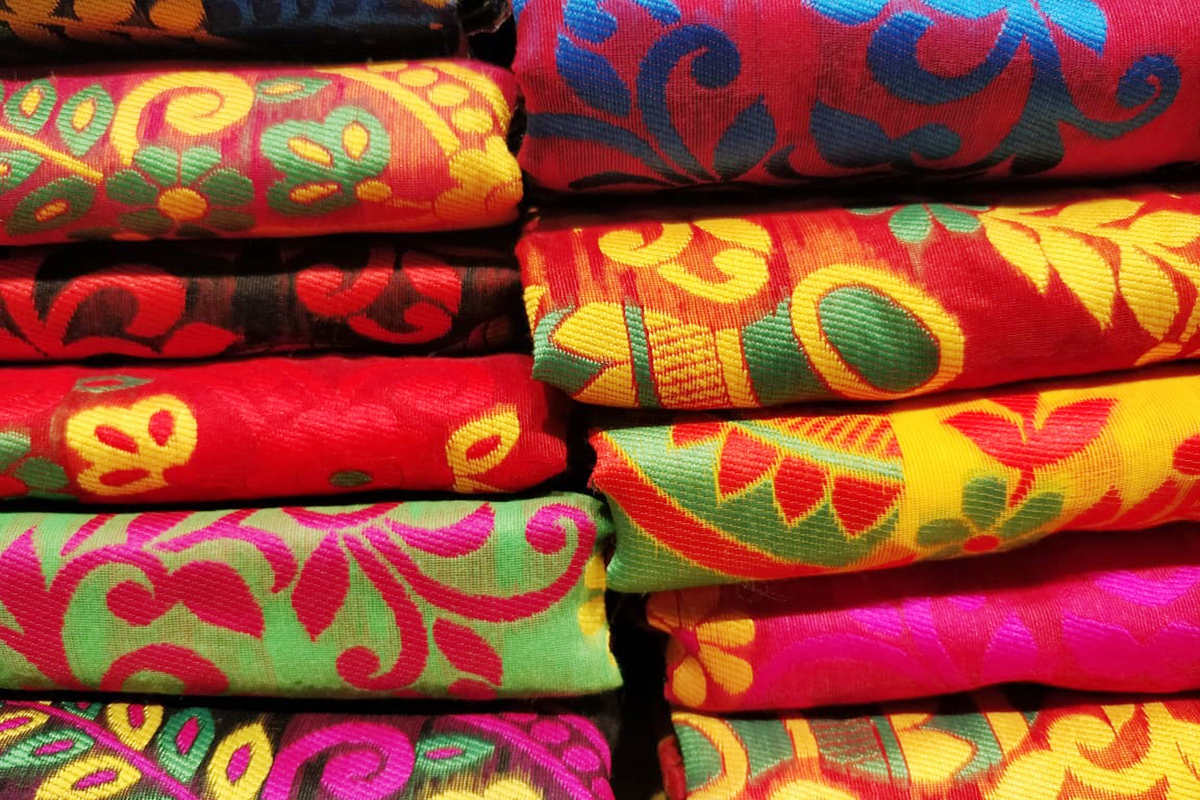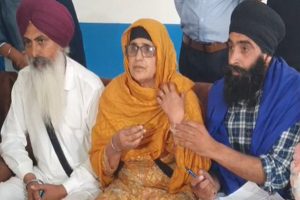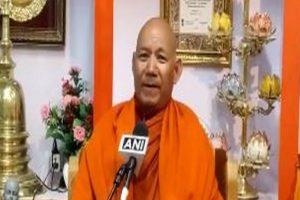The elegance of the six yards of woven wonder cannot be denied! On every occasion, be it festive celebrations or social engagements, the saree takes centre stage. The occasion transforms into a saree parade as women show off their gorgeous masterpieces woven by our skilled craftsmen. Each saree has a story to tell. As Indian textile art historian Jasleen Dhamija has written in her introduction to her book, “Sarees are a topic of love for many. To me, they are way more than mere garments—they trigger memories of events and of people; they evoke emotions.” (Sarees—Stories in Six Yards)
Thus, when three saree items from West Bengal recently received the GI tag, it became an occasion to celebrate along with the weavers. Mamata Banerjee, chief minister of West Bengal, announced her pleasure over the social media platform X. She wrote, “Three handloom saree items of West Bengal, namely Tangail of Nadia and Purba Bardhaman, and Korial & Garad of Murshidabad and Birbhum, have been registered and recognised as GI products. I congratulate the artisans for their skills and achievements. We are proud of them.” In fact, till date, 27 items from Bengal have received the GI tag.
Handloom weaving remains a major occupation in rural West Bengal. There are more than 3.5 lakh handlooms in West Bengal, as per records of the Directorate of Textiles in West Bengal.
Tangail sarees are one of the most attractive handloom products in Bengal. The word ‘Tangail’ finds its origin in the Tangail district of erstwhile East Bengal—present-day Bangladesh. The weavers of these sarees are mainly from the Basak community, who migrated from the Tangail district before partition to settle in Katwa, Dhatrigram, Tamaghata, and Samudragarh areas in Purba Bardhaman district. Tangail is also manufactured in Nadia. Around 20,000 Tangail weavers in Bengal are involved in its production.
Earlier, the Tangail saree was referred to as Begum Bahar, in which silk warp and cotton weft were used to create it. Eventually, the use of both silk warp and cotton weft became popular around the country. According to the Directorate of Textiles in West Bengal, silk Tangail sarees have been revived. But the cotton Tangail is more popular. Tangail cotton sarees have a finer count and are adorned with extra-warp designs using coloured yarn. It is a simplified version of a Jamdani cotton saree, but with minimal designs in the body portion. The technique of drawing and weaving extra weft for figured Tangail sarees is more or less identical to that of Jamdani sarees.
Weaving is done using locally sourced pure cotton threads. The threads are first thoroughly washed with water to remove contaminants, then dried in the sun and sent to be bleached and dyed. After the dying process is complete, the cotton threads are sent to the weavers in bundles to make the bobbins.
Weaving is done on a handloom by traversing the longitudinal threads (warp) with the horizontal threads (weft). For a better look and finish, weavers apply a paste made from sago or popped rice, which lends a sheen to the sarees and also makes them a little tough. This is how tant sarees are woven.
Tangail sarees are the quintessential six-yard taant sari and are characterised by a thick two-to-four-inch border and a decorative pallu. Woven using fine cotton yarn in a variety of floral, paisley, and artistic motifs like bhombra (bumblebee), tabij (amulet), rajmahal (a royal palace), ardhachandra (half moon), chandmala (garland of moons), ansh (fish scales), hathi (elephant), ratanchokh (gem-eyed), benki (spiral), and tara (star).
Geographically, Bengal is known for producing the best-quality cotton sarees because of the quality of cotton grown in this region due to its proximity to rivers and the soil conditions. The exquisite Baluchari silk saree of West Bengal, famous for depictions of mythological scenes on the pallu and border, also received the GI tag in 2011. Even the Garad and Korial are exquisite weaves typical of West Bengal. In fact, the word Korial has been derived from the word Kora, meaning white.
They’re usually classified into two types, namely the Gorod-Korial, a refined version of Garad sarees, and the Korial-Benarasi, embellished with heavy gold and silver motifs inspired by the Banarasi brocade technique.
Garad is a white saree with a red border that epitomises traditional Bengali women. Garad silk sarees hold immense cultural significance in Bengal and have sacred importance in the traditional rituals of the Bengali community. The red border represents fertility and prosperity, while the white or off-white body symbolises purity and innocence. These sarees are traditionally woven with threads and are not dyed so as to retain the purity of the fabric, with a bold, red border to off-set the white body.
A more ornamental and richer version of the quintessential Bengali Garad silk saree is the Korial silk saree, also called Garad-Korial. While the Garad has a vibrant red border on a white or cream body, the Korial version has intricate motifs woven on the white base, along with elaborate patterns adorning the border and pallu, mostly using zari.
Korial silks are rich and intricately woven, making them perfect for weddings and similar occasions. The main feature of the Korial saree is its pure white body and broad red border. However, unlike the Korial, the Garad saree has a lighter red border and is usually adorned with flower-shaped and other motifs that enhance its appeal.
Both the Garad and Korial are sourced from the districts of Murshidabad and Birbhum, where the silk weaving industry of West Bengal is primarily confined. In terms of sericulture production, West Bengal contributes more than 12 per cent of the total production in the country. In fact, women contribute about 60 per cent of the workforce engaged in sericulture.
Saree can never go out of fashion. It is being worn and will be worn by both the young and the old. The elegance and beauty of a saree is incomparable. The sarees that women inherit as heirlooms are wrapped in stories and memories.











